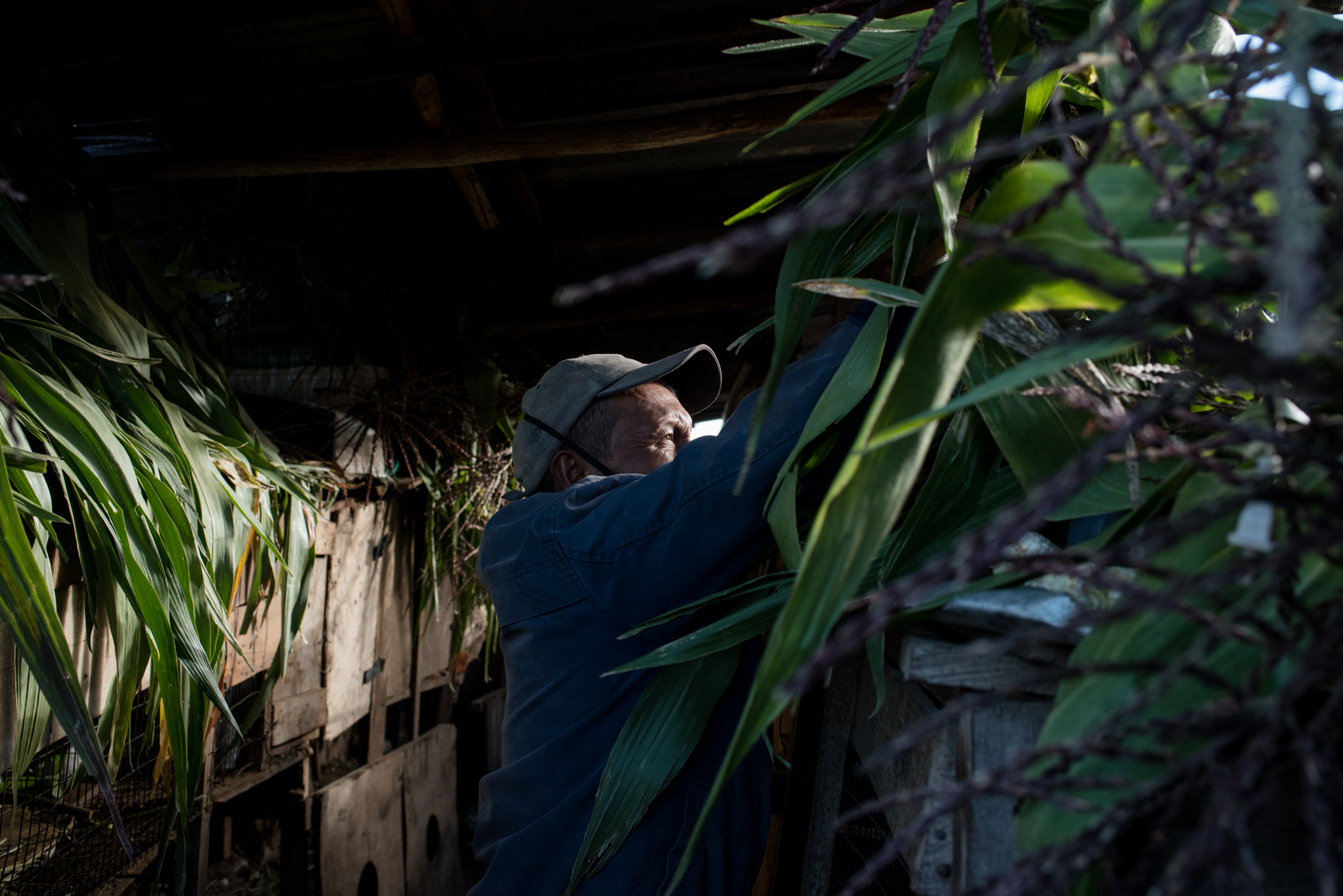It’s an early September Saturday morning when pockets of people in calf-high boots and shovels on their shoulders flock towards the foothills of El Ilaló—an inactive volcano with a luscious green landscape that’s home to a historically Indigenous commune juggling to keep their collective ways of life relevant in the face of Quito’s expanding metropolis.
Gerardo Simbaña, a lanky man with long black hair in an Andean-patterned white shirt and a Gucci cap, assembles old and young under the shade of tree leaves after their temperatures are checked and hands sanitized. Split into groups, he sends them off to dig the dry crumbly soil for five hours straight so they can install an irrigation system that will allow commune members to water their own fruit and vegetable gardens.
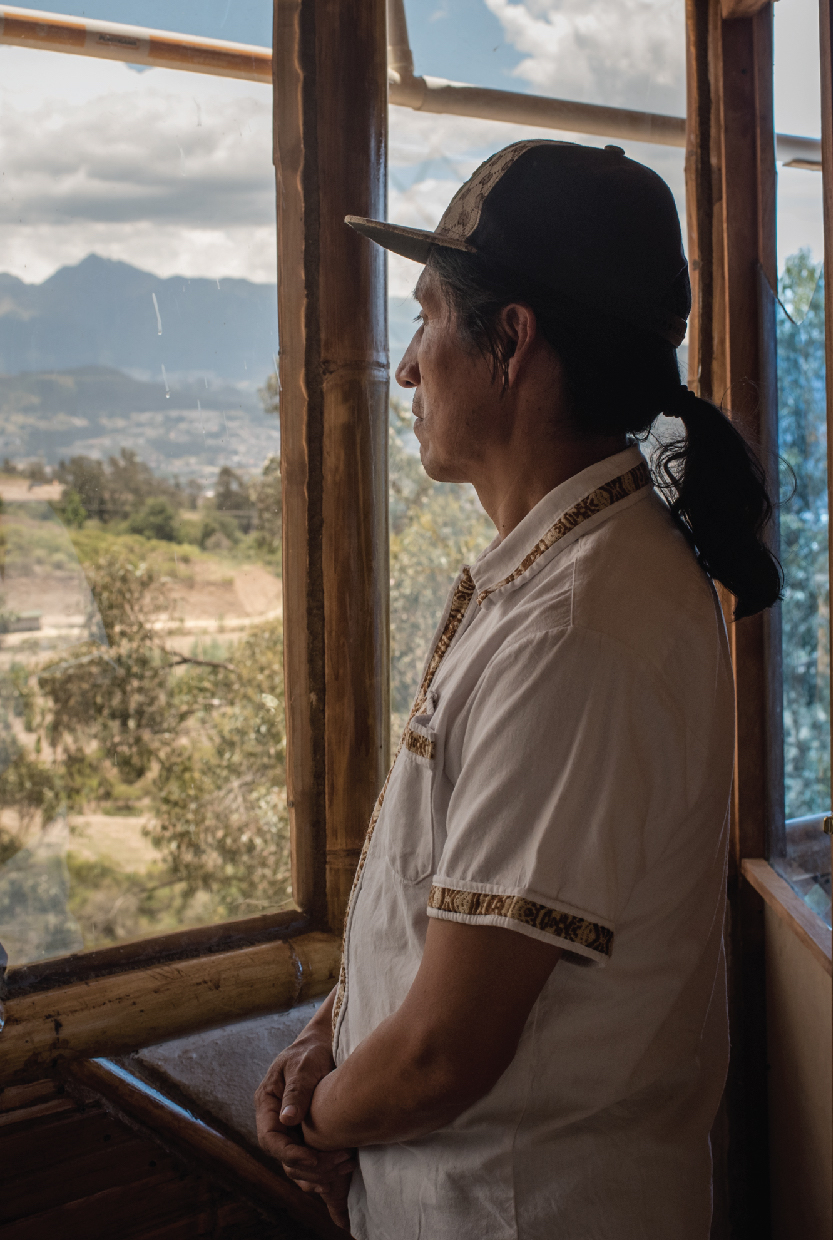
The project comes asthe global pandemic has collapsed Ecuador’s economy—its national unemployment and precarity rate spiked to 83% since March—and brought half of the commune’s 64 families into food insecurity. Instead of waiting for state institutions to offer economic relief and solutions, commune La Tola Chica has taken matters into their own hands and become more self-sufficient.
“Here, we have our own autonomy,” says current commune president Gerardo Simbaña, “(which) allows us to be the creators of our own life processes and put aside any dependency on the municipality to organize them for us.”
Since 1937, Indigenous and Afro-descendant communities like La Tola Chica have organized under the legal category of ‘commune’ thanks to a law that recognized and protected communal land as a collective territory rather than individual and private properties. That label has given them a degree of autonomy; from having their own democratic processes and spiritual traditions to protecting native forests from mass-scale logging and urbanization.
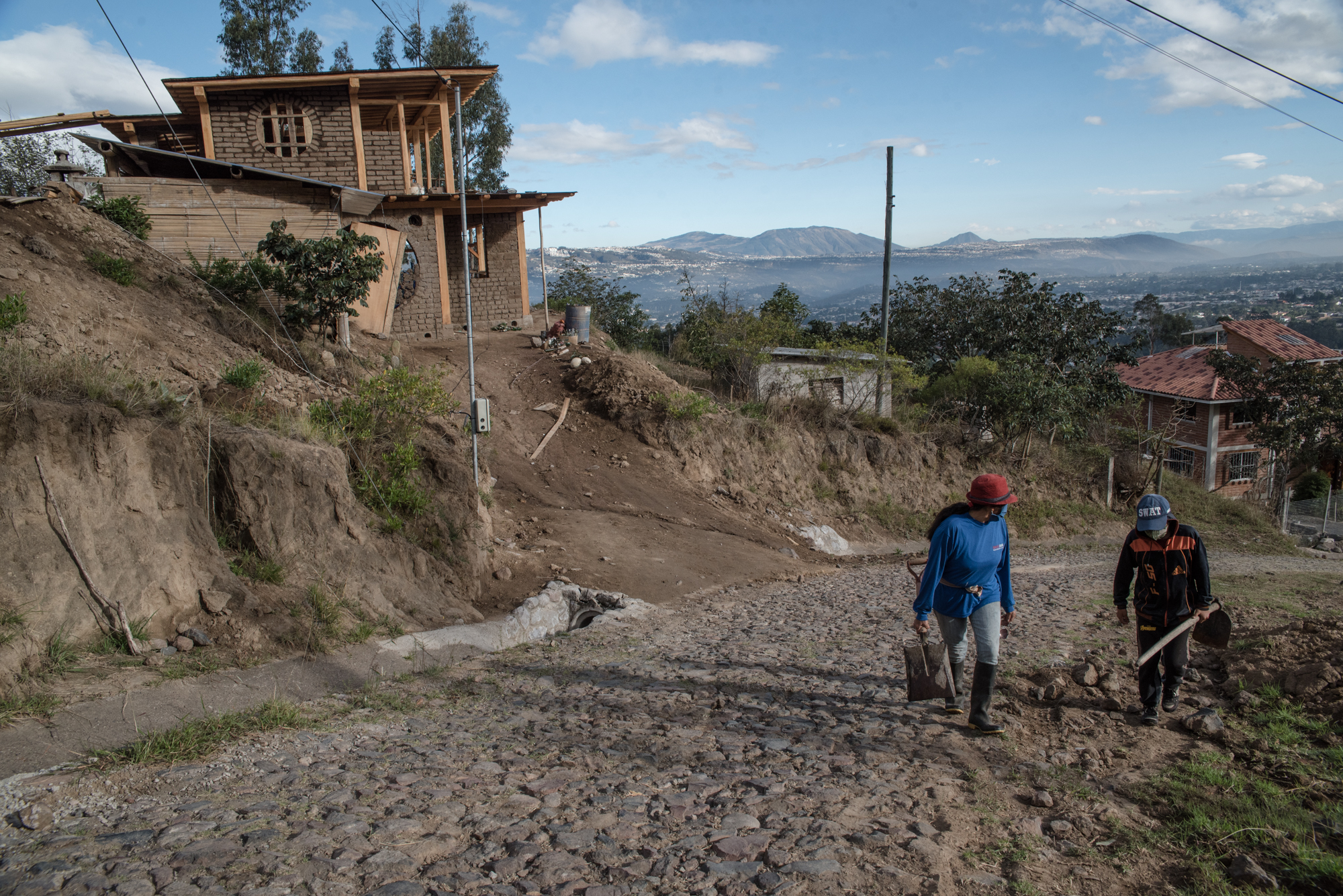
Some critics argue, though, that this law has been used as a tool to incorporate and control ethnically minoritized groups under the wing of the state. Specifically, to dissolve local governments and even entire communes if they don’t suit its interests. Yet for many Indigenous and Afro-descendant people it has been a way to preserve ancestral practices and worldviews founded on solidarity and collectivity rather than Ecuador’s liberal principles of individual citizenship and private property.
“Our relationship to the land is different,” explains Gerardo Simbaña, who was undergoing priesthood formation until land conflicts led him to reclaim his KituKara roots and Andean spirituality. “The westerner wants to possess and seize the land while we feel we are part of it, not just as a place, but as a space that holds our life legacy.”
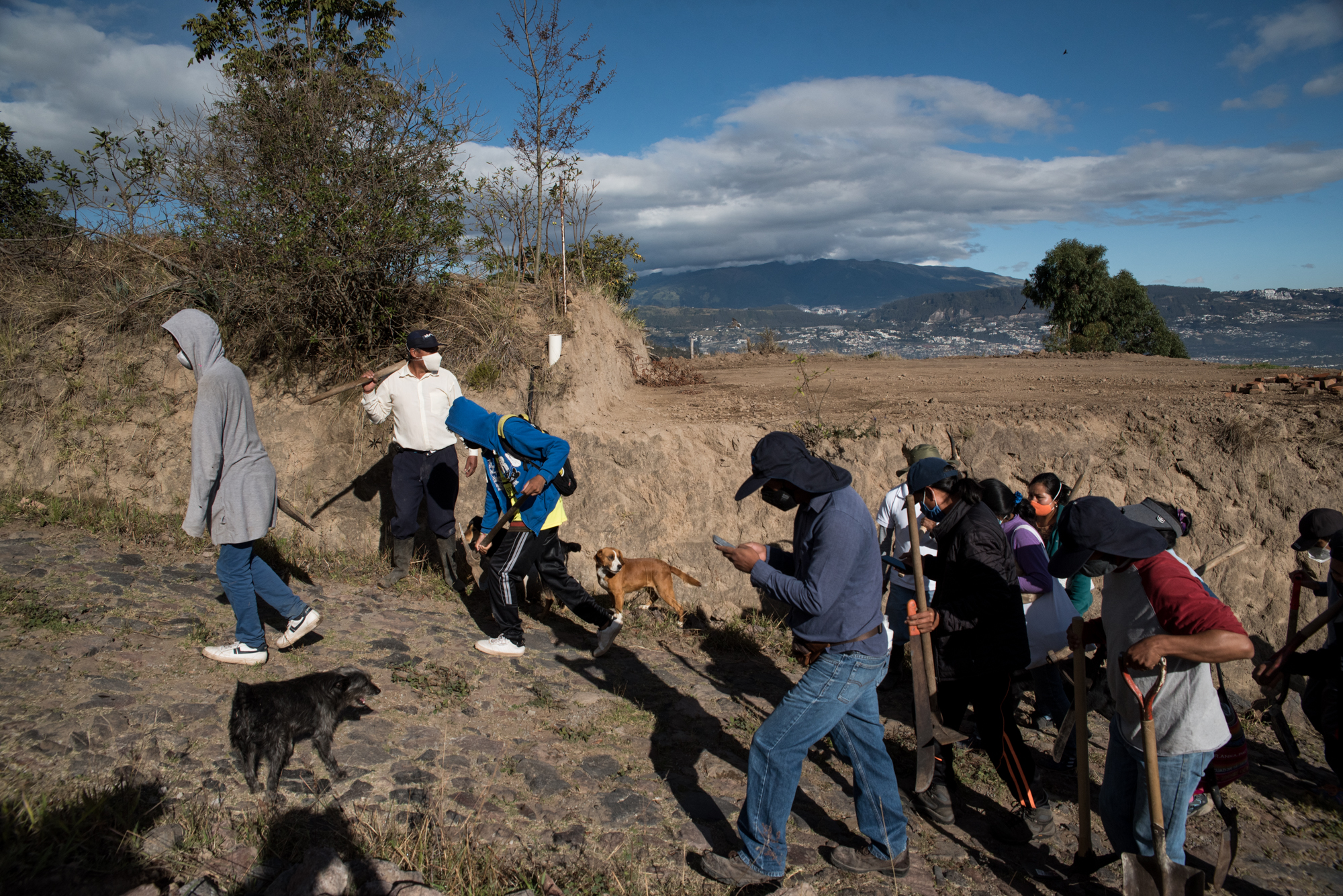
Though agriculture is no longer their main source of income, harmonious coexistence with the Earth is still weaved into La Tola Chica’s core fabric. For Ramiro Azaña, who directs the commune’s environmental commission and reforestation program, the new irrigation system is merely a continuation of that fabric, adapted to a modern urbanized context. It marks not so much a return to agriculture as a way of life, but as complementary to it.
We are fusing new technologies with ancestral knowledge.
“We have inherited the philosophy of living together with nature from our great great grandparents,” Azaña says. “There is nothing new in what we are doing, except [that] we are fusing new technologies with ancestral knowledge to continue this tradition.”
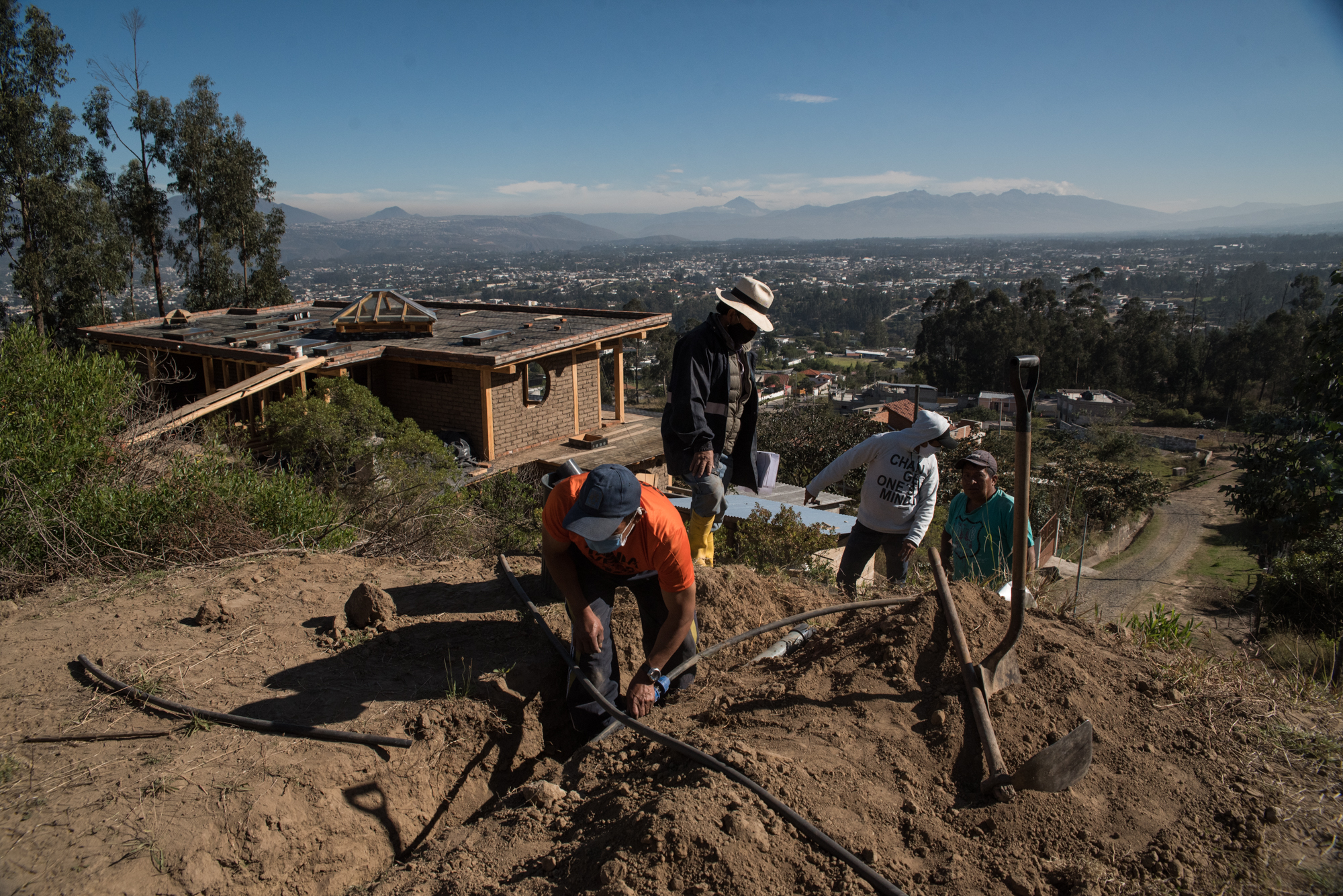
The flip-coin of being an autonomous entity, however, is that its status as ‘comuna’ exempts La Tola Chica from paying municipal tax and consequently from receiving public utility services like running water or electricity.
Lemons grow small and pale and banana trees die here, explains María Amaguay, an agriculturist who moved here ten years ago from neighboring province Tungurahua. She blames the dry climate and shares that water only arrives every eight days—and is typically just enough to cook, clean and wash your clothes.
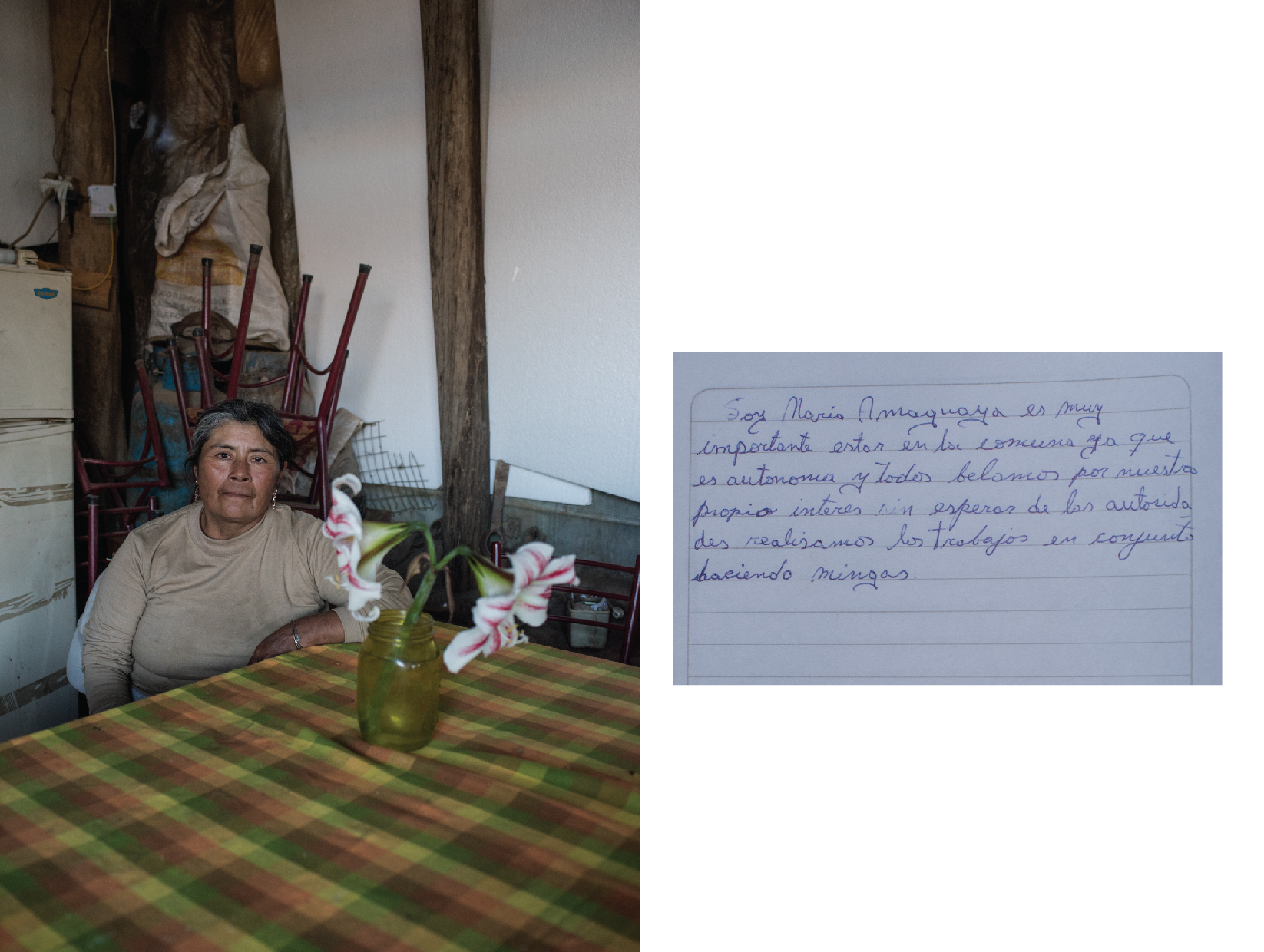
The new irrigation system would radically change her fruit garden, she says enthusiastically, but sometimes she wonders if things would be easier if she didn’t live in a commune, or if her land had private property deeds in order to get municipal services. This way, she wouldn’t have to spend the next three weekends in the minga (Quichua word for the Andean tradition of voluntary collective work for a common benefit), or pay a $40 fine for every missed day. In the absence of state provision, mingas have been foundational to La Tola Chica’s self-sustainability.
“Here we’ve had to build everything ourselves,” Floresmilo Simbaña, Gerardo’s younger brother, says. A prominent figure in Ecuador’s national Indigenous movement, Floresmilo is the kind of intellectual with volumes of books on Lenin and Marx stored in a dramatically large library with few decorations but a dark red canvas of Dolores Cacuango, a communist activist who fought for Indigenous land rights and autonomous education in Ecuador’s 20th century.

“Everything you see here,” he says pointing outside the window of his house, “the roads, the communal houses, the electric wires—we made that with our own hands.”
When they set up their own school however, they were forced to shut it down under President Rafael Correa’s government, which banned all communitarian Indigenous education in 2013.
Mingas require effort, time, team work and money.
After years of having to build everything themselves, Floresmilo Simbaña understands that a lot of people like Amaguay are tired and frustrated with living in the commune. Working in mingas and attending hour-long assemblies aren’t as romantic, nor as voluntary, as many might think. They require effort, time, team work, and money, Simbaña explains, which not everyone can afford or do when they also have demanding jobs, families and studies.
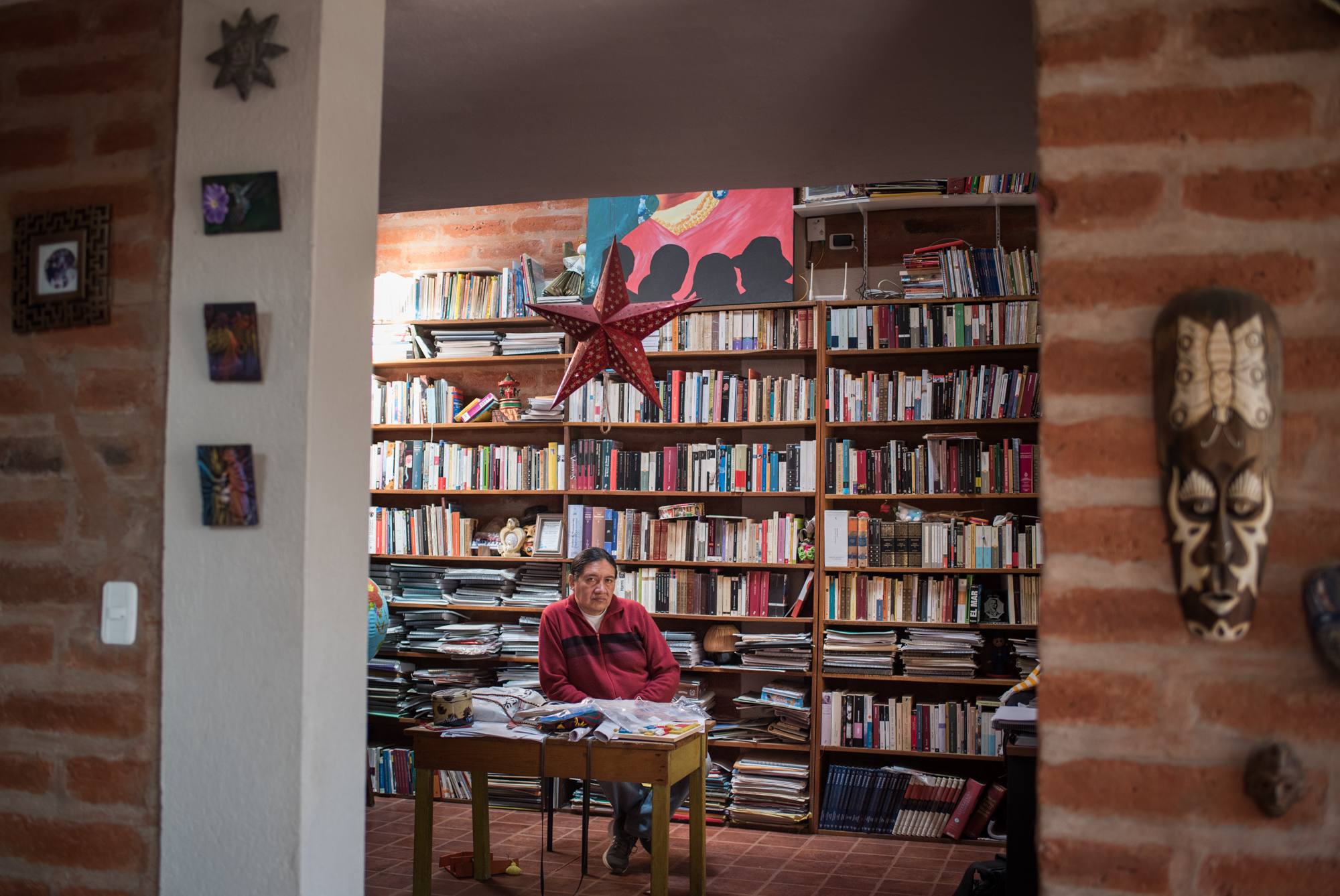
But it wasn’t always like this, Floresmilo Simbaña shares, remembering the ‘70s with nostalgia. While life was precarious, people’s main economy depended on working the land to grow food for self-consumption and to sell at local markets. Attending assemblies, helping out in mingas and waking up before dawn to tend the land “was the only way to live at that time, there wasn’t anything else.”
Quito, which is just a 30-minute drive from the commune, “was like another country, far away,” he recalls.
The capital city’s rapid urban expansion since the ‘90s has, however, absorbed all rural life in its path; giant meat industries, shopping malls and supermarkets outbid local farmers, and the commune’s youth gradually abandoned agriculture for low-wage factory labor. Simbaña, who was the commune’s first to attend university and study law, refuses to see this as a loss, but rather a result of adapting to the changes of life, something to accept rather than resist.

“There is this false idea that all Indigenous people are farmers, or that Indigenous people have gone through a bourgeoisization and that they must return to being farmers,” Floresmilo says with frustration, “[but] the reality is that communes are no longer purely rural-agrarian. Indigenous people have occupied urban spaces and they are perfectly capable to be both a public servant and the leader of a commune.”
Even as La Tola Chica has undergone these huge changes, the land remains collective. That this still holds is, in a way, a miracle with a heavy price. When a minority of people sought private property deeds for their plots of land and wanted to separate from the commune in the ‘80s, a violent conflict broke out.
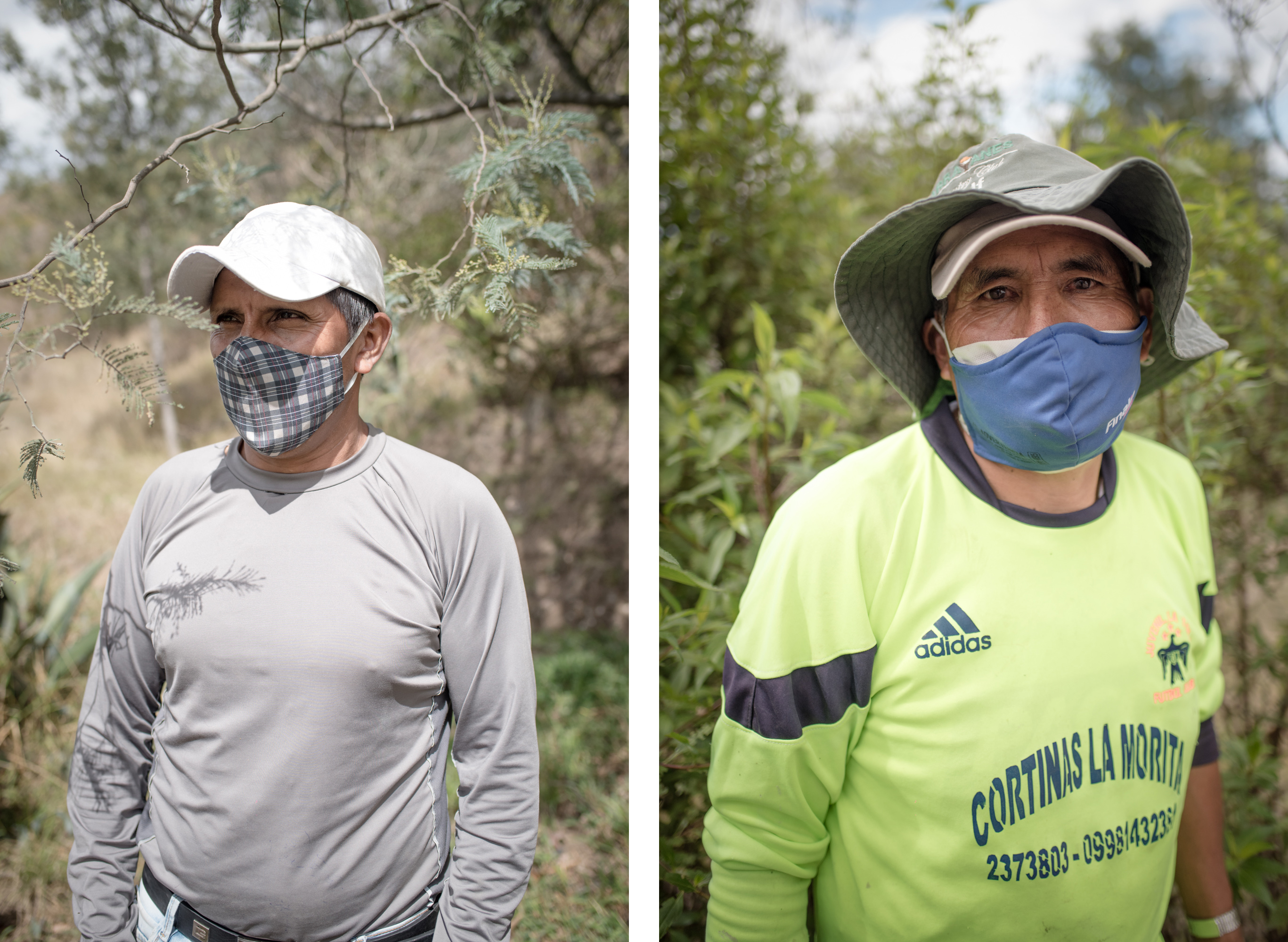
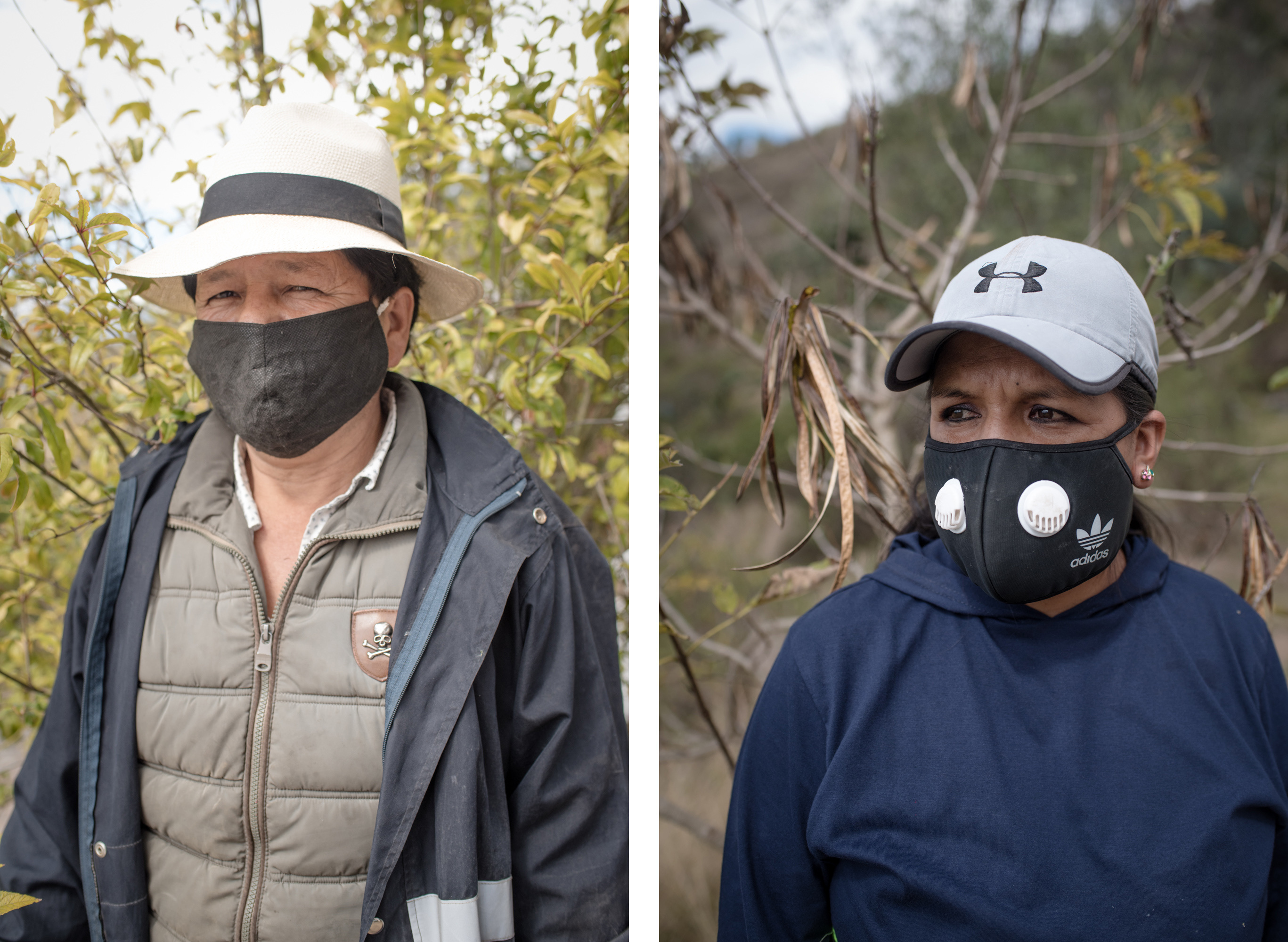
Over the span of a decade, the territory split nearly in half, from 470 acres to 257, and half of the families left. Most of that land was allegedly robbed by illegal land traffickers contracted by former commune members, Floresmilo says.
Since then, La Tola Chica’s has opened up to ‘outsiders,’ radically diversifying the commune’s demographics and culture. Original Indigenous families who identify as Kitu Kara descendants live side by side with Indigenous migrant workers from neighboring provinces were attracted to the commune for its affordable land and, as of late, the green oasis has brought in some middle class, expat environmentalists as well.
Floresmilo laughs as he remembers reading Marx as a teen for school. He found nothing extraordinary in his communist vision because “it’s what I was living in the commune.” The end of private property was not a foreign notion nor an abstract ideal because here “everything belongs to everyone,” he adds from behind his desk, towered by the daunting library of bookshelves that reaches the ceiling of his house.
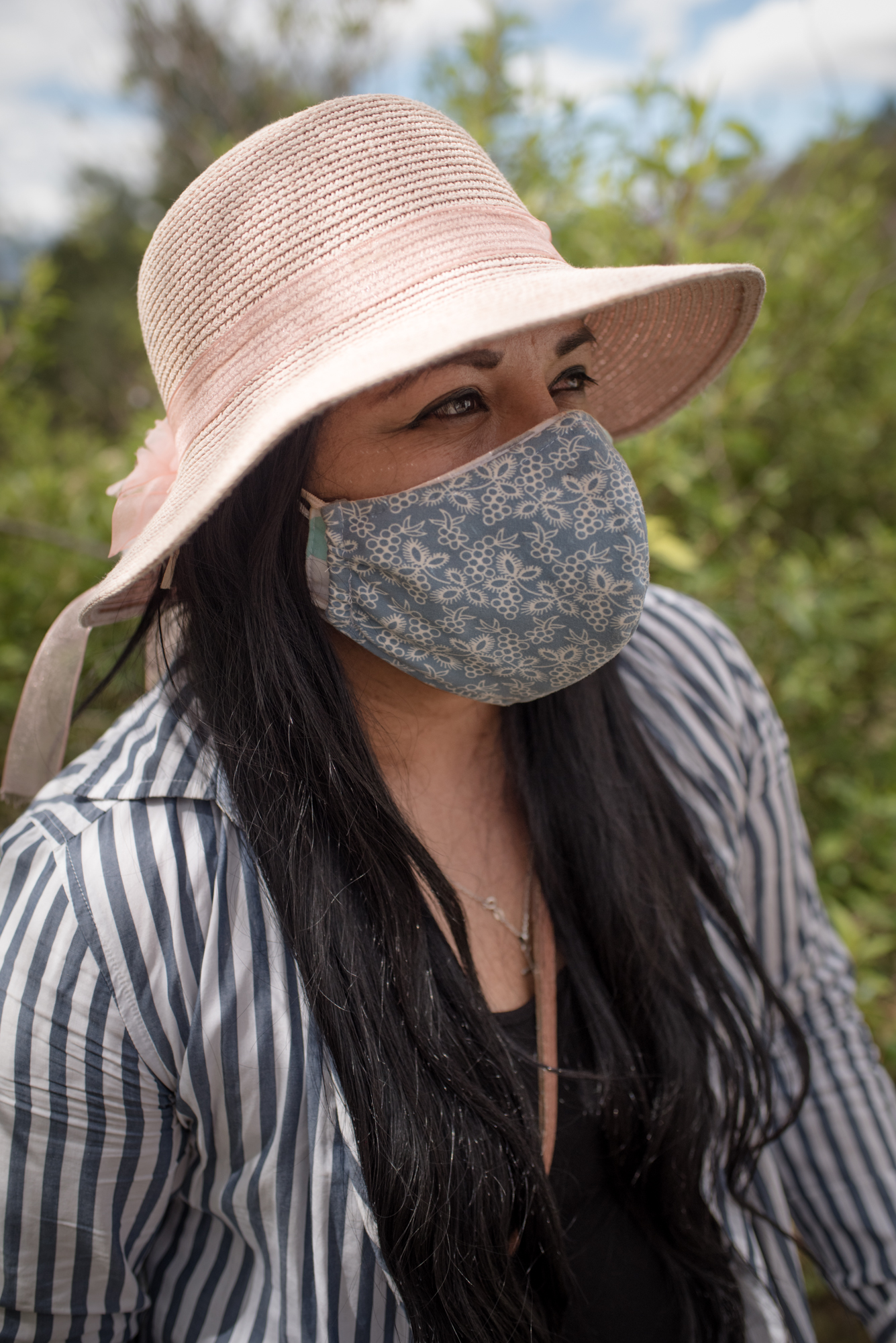
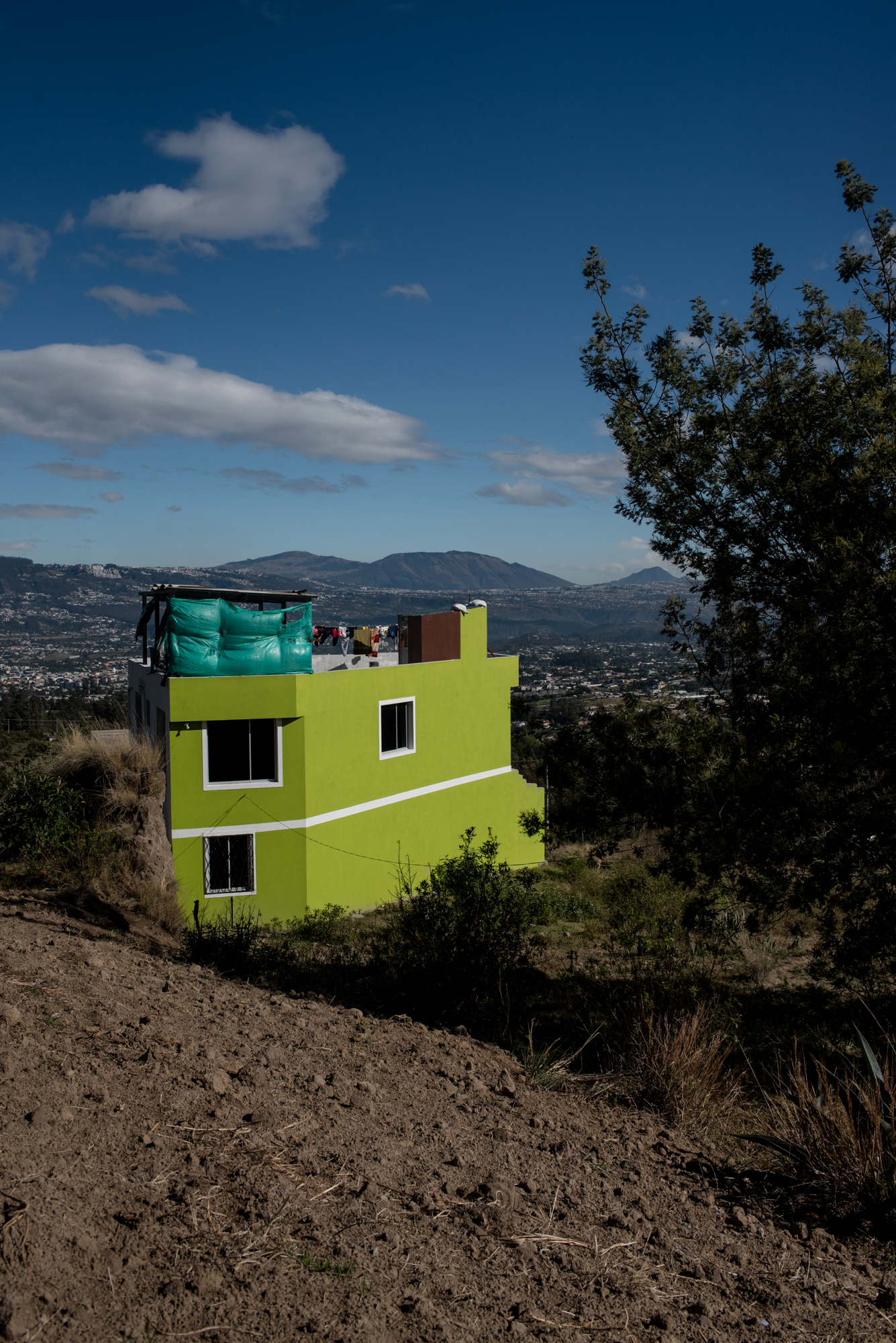
Yes, everyone has an equal right to the land and no one can own more than the three plots they’ve been assigned, but a walk through La Tola Chica tells you this isn’t the communism from Simbaña’s teenage years. Luxury eco-conscious homes made from superadobe and flamboyant wood stand next to unfinished cemented-brick houses no bigger than 540 square feet. Rights to the plots of land used to sell for USD $7000 about ten years ago, which made it accessible to migrants like Amaguay. Now, they sell for as high as $60K and there’s no regulation on sales prices.
“The social differences are very visible,” Floresmilo admits, “but they aren’t structural, they don’t reach an extreme. What matters is that we all have similar situations to live and that there is equity and harmony.”
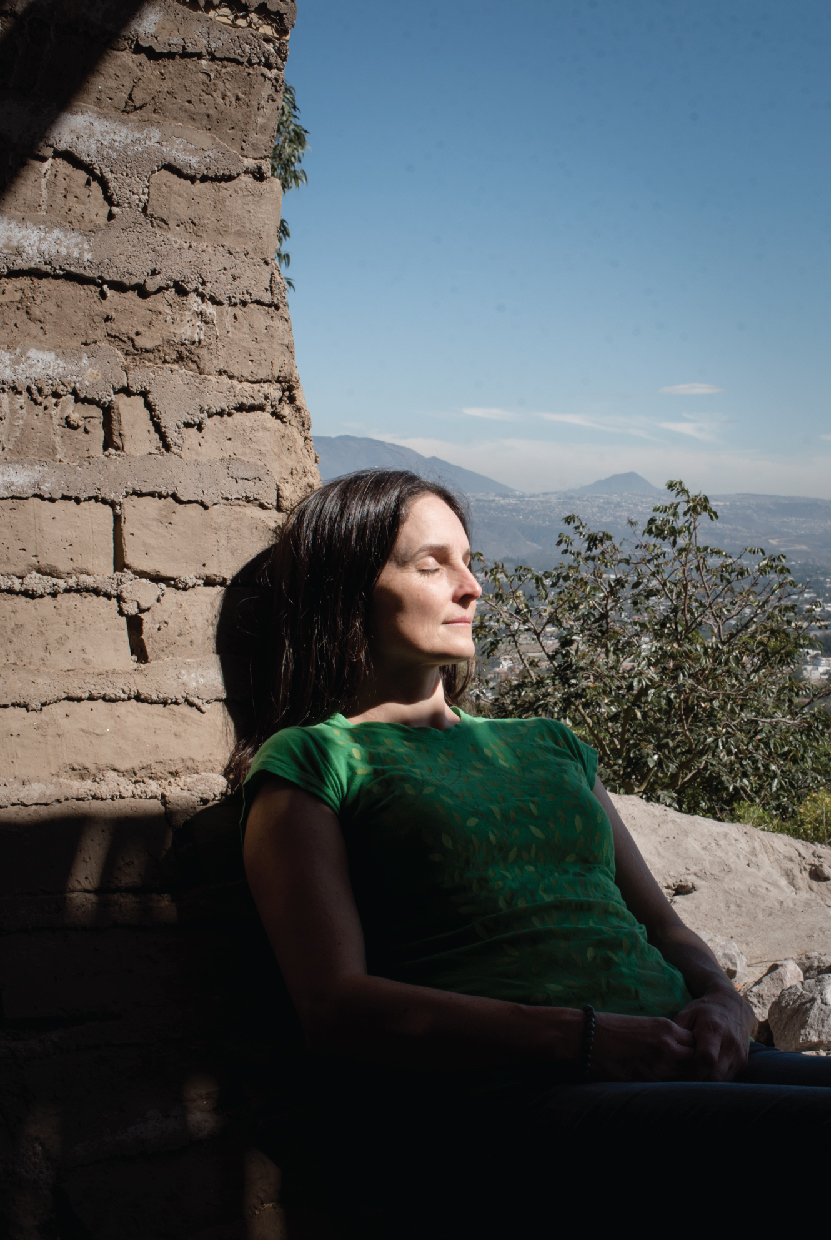
Deciding who can join the commune is a democratic process, approved via a consensus from the assembly, which all members must attend once a month. So, when Danna Hill—a 43-year-old political science professor from Florida—wanted to buy rights to land in the commune in 2014, a fiery debate ensued at the assembly. “There was a lot of distrust because I was a foreigner,” Hill says, “they thought I just wanted to buy the land and then sell it for more.”
Hill worked with Floresmilo Simbaña, he spoke on her behalf and she was approved. Her experience is a sign that even as the commune transforms, its members are, to some degree, still in charge.
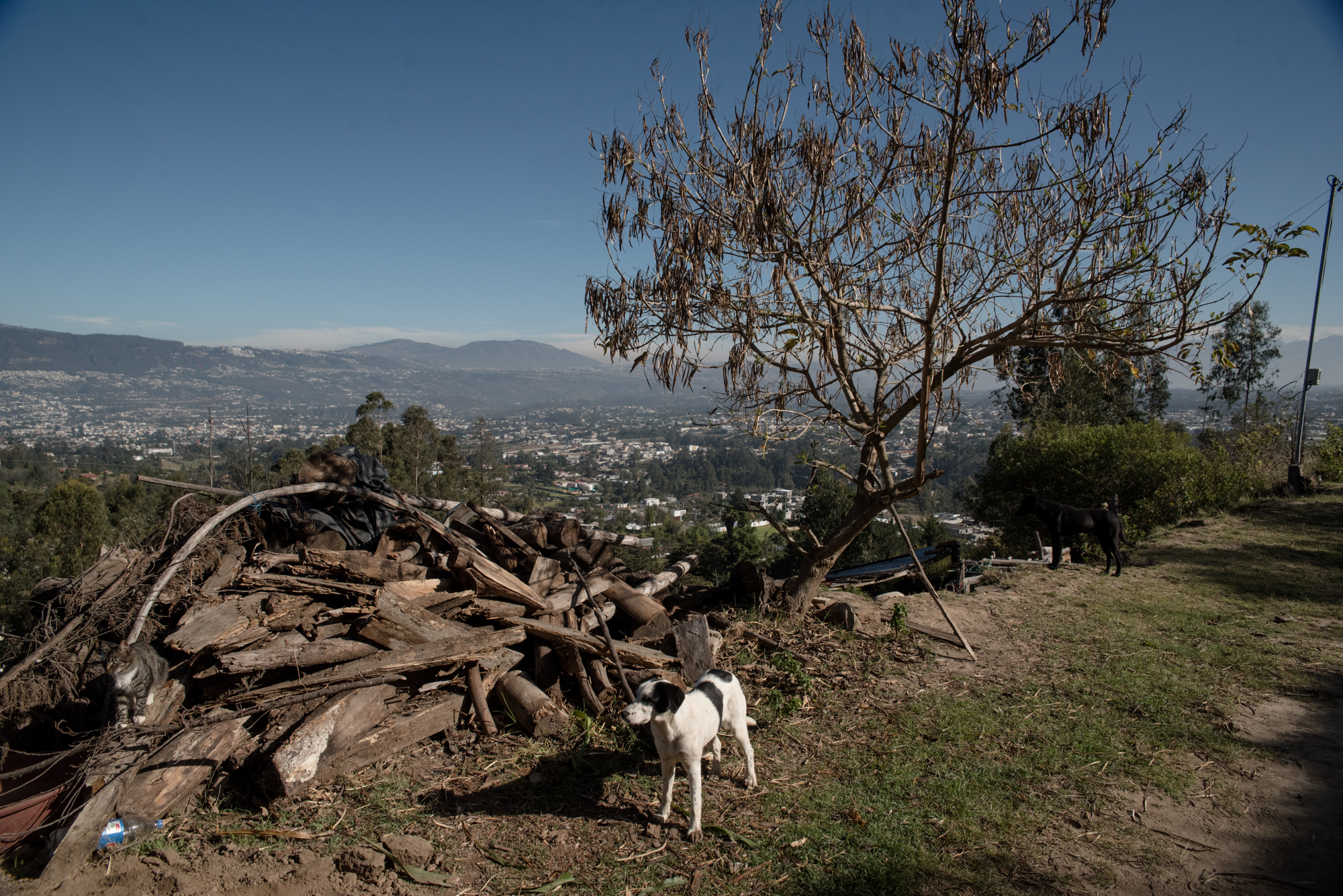
As the capital city continues to expand, covering its embracing Andean mountains with wires, brick and cement, La Tola Chica is becoming increasingly visible as an alternative model that still preserves collective property and coexistence with nature. An exception it owes largely to its autonomous government and its KituKara cosmovision.
Whether it can sustain this status hugely depends on whether the new generation, in all of their diversity, wants to continue living as a commune, or if it caves into the easy comforts of becoming a neighborhood and relinquishes its power to the municipality.
If La Tola Chica’s continuous transformations are anything to go by, its future certainly doesn’t seem to be set in stone. “The commune is always a utopia,” Floresmilo Simbaña says as he moves away from the Dolores Cacuango portrait, “sometimes a reality.”
